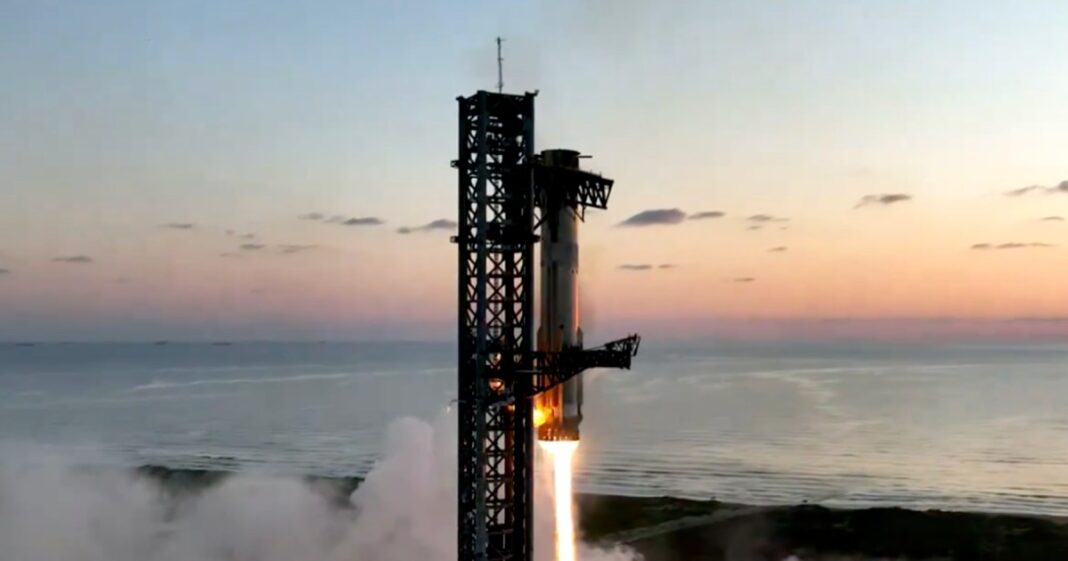SpaceX has scripted history with the fifth test of its massive Starship rocket system. The giant rocket launched from the Starbase site in South Texas earlier today, and following a brief trip to space, the reusable spacecraft made a splashdown in the Indian Ocean.
But the more remarkable feat was the successful capture of the Super Heavy booster, a fully reusable first stage that stands at a towering 71 meters and draws power from 33 Raptor engines. Up till now, the boosters have splashed into the water (or got damaged), but this time, SpaceX managed to capture it using giant mechanical arms.
Starship rocket booster caught by tower pic.twitter.com/aOQmSkt6YE
— Elon Musk (@elonmusk) October 13, 2024
For the first time, the Elon Musk-led company captured the Starship booster by executing what it calls the “chopstick” maneuver. An astonishing feat in itself, the “mechazilla” system caught the hulking first-stage kit seven minutes after its launch as it slowly descended into the metallic arm’s embrace.
“Big step towards making life multiplanetary was made today,” SpaceX CEO Musk shared on X, the platform formerly known as Twitter that Musk also heads up.
This marks the first time that SpaceX has captured the booster in one piece without any critical damage, instead of it exploding or landing in a water body. SpaceX is no stranger to recovering rockets, as the company has been retrieving Falcon rockets for years on floating platforms.
But with the Starship, which is the biggest and most powerful rocket ever built, the challenge, as well as the risk, was immense. A successful demonstration would mean SpaceX is not only capable of making vehicles that are ready for space missions, but also rare powerful rockets that are reusable.
— Elon Musk (@elonmusk) October 13, 2024
This is an unprecedented approach that would save hundreds of millions of dollars for not only science-driven missions, but also commercial space activities. Starship, which SpaceX claims is “capable of carrying up to 150 metric tonnes fully reusable and 250 metric tonnes expendable,” has already bagged NASA contracts for the ambitious Artemis missions.
The Starship launch vehicle, which stands 121 meters in height, is capable of carrying up to 100 people, with long-term space missions being the primary target. With its latest flight, SpaceX accomplished both its targets of a successful booster capture and a spacecraft splashdown following a trip to space.
“SpaceX engineers have spent years preparing and months testing for the booster catch attempt, with technicians pouring tens of thousands of hours into building the infrastructure to maximize our chances for success,” the company recently wrote in an update.
The latest success will be followed by more such tests, as SpaceX prepares to fulfill its NASA obligations and gears up for crewed missions to the moon and, eventually, Mars in the long run.
Source link









